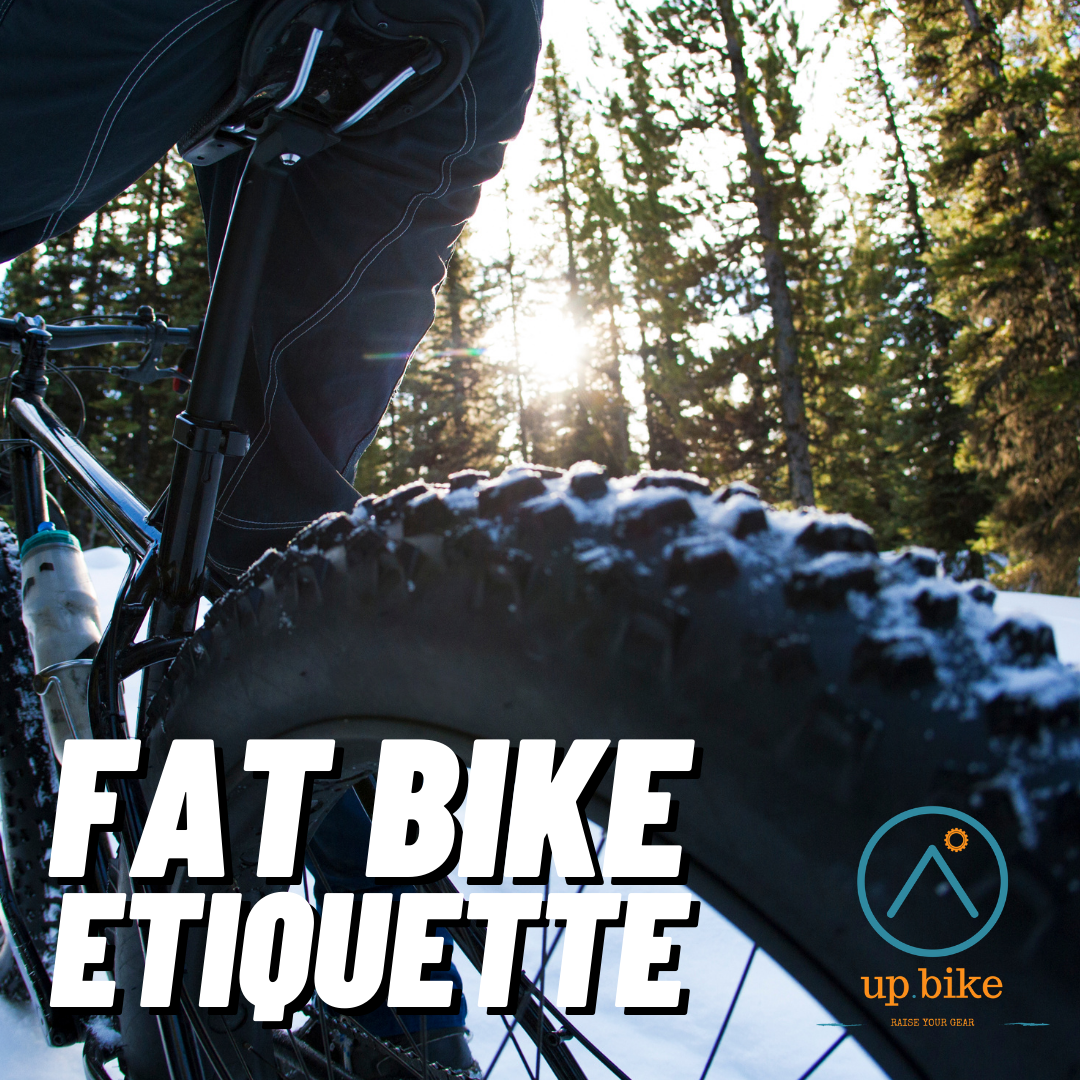Snow is finally here, and that has many riders pulling out their fat bikes for winter riding. Especially with so many new trail users due to the cabin-fever caused by COVID-19 lockdowns, there are many new fat bikers making their first tracks on groomed trails this season. And when we mean tracks, we mean it.
One of the best parts of fat biking is just how accessible it is; if you can ride a bike, you can fat bike. But there are a number of small things that not only enhance your experience as a rider, but also limit your impact on the trail to make sure it’s just as pristine and fresh for the folks behind you. We’ve put together a few basic fat bike etiquette tips to help inform all users on how to be good stewards of groomed trails.

Ride Wide. Groomed trails only work with fat tires. Most trail associations and winter grooming venues will have strict guidelines on tire width once the snow flies to help maintain a good base. The standard fat bike tire minimum is usually considered 3.8” or wider, though most fat bikes now have 4” or wider tires as a standard. Most trails do not consider 3” plus tires appropriate for winter trails, and outright ban 2.25” mountain bike tires.
The reason is simple. Narrow tires don’t stay on top of the snow. Instead, they dig in, causing a long, deep rut that looks and rides like a scar. Plus, it’s miserable to ride a mountain bike on soft snowy trails anyway. There are very rare conditions where mountain bikes may be rideable on hard-packed or icy trails, but always follow the rules of the local trail association. If you have questions, contact the local trail director to find out more before you head out.
Ride Low. Even with wide fat bike tires, there is a world of difference on your trail impact based on your tire pressure. Most 4” tires ride best between 4 and 6psi, though your body weight may require more pressure. The softer the tire, the more the rubber ‘puddles’, expanding your contact patch on the and helping to keep you and your tire on top of the white stuff. Tire pressure can also vary widely by terrain and weather. The softer, more dry, or powdery the snow is, the lower you’ll want to ride your tires. Also, keep in mind colder weather may actually cause you to lose tire pressure. Always air up your tires outside!
An easy way to check your tire pressure and your trail impact is to simply look at your tracks. It’s fine to be able to see your tire tread, but if you’re sinking in or leaving an indentation of more than a quarter of an inch, take a second to stop and airdown.
Ride Smart. It can be like riding in a dream; the snow, the quiet, and the beauty of nature. But remember, you’re not the only one out there. Listen for riders coming up from behind and looking to pass and do so as soon as it’s safe. With the added crunch and hum of wide tires, plus riding with your ears covered, it’s often best not to ride with ear buds. If you do, listen with the volume low or with only one earbud so that you can hear other riders coming up from behind.
It’s also worth checking with the local trail association to learn if the trails are multi-directional. If so, that will make it important to keep your eyes up around every corner.
Don’t. Sometimes, the most important thing you can do is go home. Warm, wet weather can leave the trails too soft to ride. Just like riding mud in the spring and fall, riding when it’s too warm can leave deep ruts that can then freeze, making them almost impossible to remove with even the best grooming equipment. Save yourself the trip by checking on trail conditions from home, either directly with your local trail association, or using apps like Trailforks that allow users to post the latest trail conditions. It can also just be common sense; if it’s been above freezing for more than a couple of hours, it’s probably going to be too soft to ride.
Support The Effort. Finally, it can be very expensive to maintain groomed trails. From gas to repairs, the day-to-day expenses of a long groom can add up very quickly. Most trail associations rely heavily on donations to groom as often as needed to give trail users a great experience. Learn more about ways to support grooming in your area, and if you have the time, volunteer to be a groomer!

